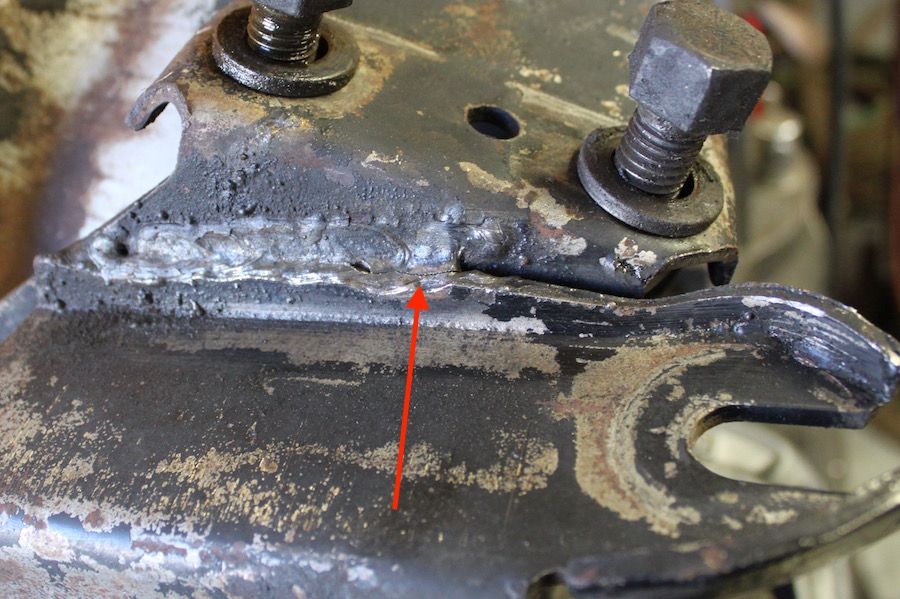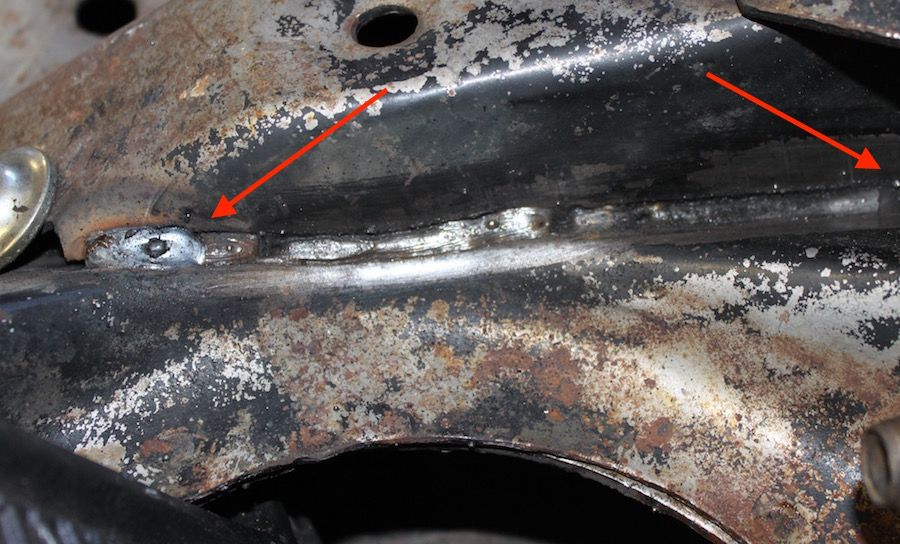FYI on K-frames
The steering box mount on the '74 Dart V8 K frame I swapped into my Duster (after fully seam welding and reinforcing it) was severely cracked. The welds along the K frame at the base of the mount had cracked completely, and when you turned the wheel the steering box would move back and forth too by a good 1/2" or so, closing and opening the cracked welds. There was so much flex that the mounting plate itself had cracked in the middle.
Crack at the steering box/engine mount weld

Crack at the steering box to K mount. I had already tack welded this one before I took the picture, but the entire "box" was broken free from the weld at the edge, the entire section between the arrows would peel open away from the K frame a good 1/4" when the steering wheel was turned.

Steering box mounting plate broken in half from all the flexing

The factory welds were hit and miss. There are numerous threads on here about the LCA pivot mounts breaking free of the K frame, and a handful of threads about torsion bar sockets ripping out of the crossmember. The factory never intended these cars to last past 100,000 miles. And they were designed for tiny torsion bars and bias ply tires that offered very little traction to transmit force to the frame/suspension. Even the hockey puck hard BFG T/A radials offer significantly more grip than the original bias ply's (and therefore transmit more force to the suspension and frame).
I seam weld and reinforce the K-frames on all of my cars if/when they come out. Even an amateur welder can significantly improve the stiffness and strength of a factory K member. Some factory welds are better than others, but some of them are downright scary. Not all of them absolutely need to be fully seam welded and reinforced, but if you intend to run better tires, brakes, or do anything other than cruise down the street to Dairy Queen it's not a bad idea. At the very least the K's should be cleaned and inspected on removal, to make sure you don't see things like the pictures above.
The steering box mount on the '74 Dart V8 K frame I swapped into my Duster (after fully seam welding and reinforcing it) was severely cracked. The welds along the K frame at the base of the mount had cracked completely, and when you turned the wheel the steering box would move back and forth too by a good 1/2" or so, closing and opening the cracked welds. There was so much flex that the mounting plate itself had cracked in the middle.
Crack at the steering box/engine mount weld

Crack at the steering box to K mount. I had already tack welded this one before I took the picture, but the entire "box" was broken free from the weld at the edge, the entire section between the arrows would peel open away from the K frame a good 1/4" when the steering wheel was turned.

Steering box mounting plate broken in half from all the flexing

The factory welds were hit and miss. There are numerous threads on here about the LCA pivot mounts breaking free of the K frame, and a handful of threads about torsion bar sockets ripping out of the crossmember. The factory never intended these cars to last past 100,000 miles. And they were designed for tiny torsion bars and bias ply tires that offered very little traction to transmit force to the frame/suspension. Even the hockey puck hard BFG T/A radials offer significantly more grip than the original bias ply's (and therefore transmit more force to the suspension and frame).
I seam weld and reinforce the K-frames on all of my cars if/when they come out. Even an amateur welder can significantly improve the stiffness and strength of a factory K member. Some factory welds are better than others, but some of them are downright scary. Not all of them absolutely need to be fully seam welded and reinforced, but if you intend to run better tires, brakes, or do anything other than cruise down the street to Dairy Queen it's not a bad idea. At the very least the K's should be cleaned and inspected on removal, to make sure you don't see things like the pictures above.